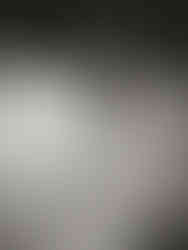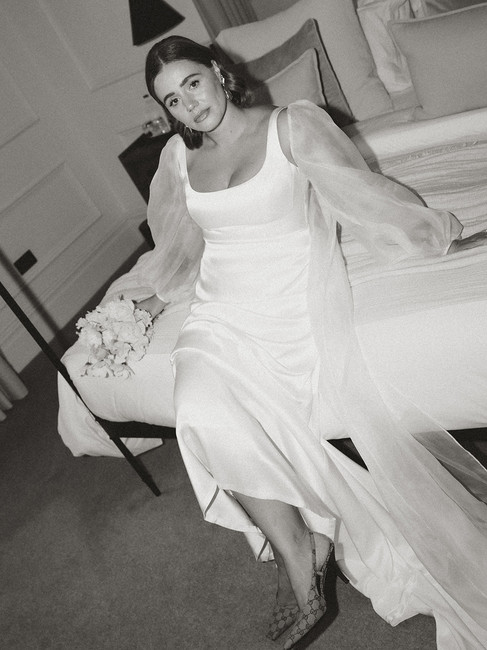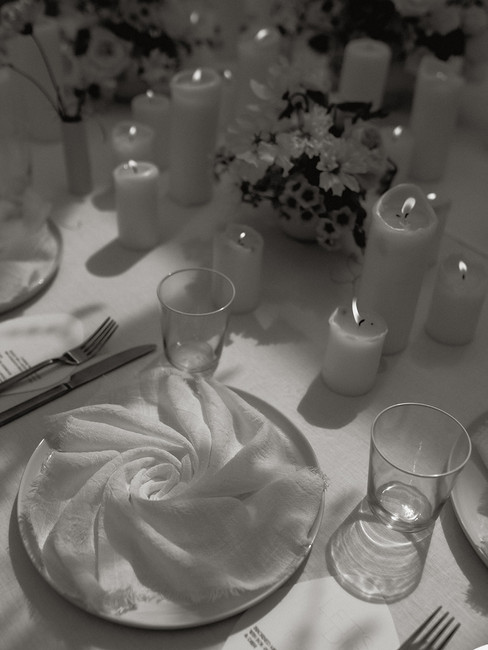An Industry Guide to Styled Wedding Shoots: Planning, Preparation and Learnings
- Megan Murray

- Aug 25, 2024
- 9 min read
Essential insights for industry creatives: Navigating the complexities of styled shoots and creating standout visual content.

As much as we love sharing wedding inspiration and ideas with our couples, let’s hear it for our industry peers in this week’s Journal, which looks at everything you need to know when planning a styled wedding shoot.
Imagery has always been the heart of the wedding industry, capturing the moments that all of our suppliers work so hard to create for that special day. But, with the rise of social media, we're having to work harder than ever to create new, engaging content across both stills and film, to push out on social channels, websites and newsletters, to show couples and clients what they can do.
While in some ways the industry feels more demanding than ever, we love that collaboration between creatives and like-minded suppliers is something incredible that’s come out of this change. Over the last few years styled shoots have become the way to network and develop contacts, as well as push ourselves creatively and try new trends, which in turn attracts new couples. It’s a really exciting time.
But, while we’ve gotten into the rhythm of working on new styled shoots every few months, we know that for those who are new to the industry or haven’t had the opportunity to collaborate in this way yet, it can all look a bit smoke and mirrors. If you've been left wondering how these events come together, what are the costs, how they benefit suppliers and if it’s all really worth it, we’ve asked industry experts and The Old Vicarage favourites to share their experiences to create our industry guide on how to plan a styled wedding shoot.
Let’s start with the basics; what is a styled wedding shoot?
Okay! So, if you work in the wedding industry - you could be a bridal designer, florist, content creator or venue owner - you will no doubt rely on gorgeous imagery to show potential clients and couples your skills, and essentially, why they should work with you.
You might think: “Well, won’t working on weddings and with real couples help me build a portfolio of images?” While the answer is yes, not every couple is willing to try the newest trend, be experimental and push your skills creatively. Plus, if you’re new to the industry it might take you a while to build up a body of work, and when you do, there will always be concepts that don’t show your identity and brand to the fullest.
This is when collaborating on a styled shoot comes in. Across the industry, we’re all in the same boat. Instead of waiting for a daring couple or paying huge amounts to mock up an idea you’ve been working on, teaming up with other creatives means everyone brings their skills and time for free, with a shared outcome of beautiful images for all.
That sounds interesting, but is doing a styled wedding shoot really worth it?
It might sound like a lot of work but the short answer is: yes, absolutely. Verity Wright is a wedding designer, planner and the founder of the fíor collective and says that styled shoots are part of the reason her business is a success today.
“I would genuinely say that a large part of my business’ growth and the position we’re in today is reliant on styled shoots. Over the last year, I’ve worked on six shoots and this has provided me with the images I need to market my business and attract clients,” she explains. “Not only that, it’s how I’ve become established in the wedding industry because each shoot allows you to network, grow your contacts and become better at what you do, through being challenged and inspired by other like-minded creatives.”
Nikki McKinney, founder of The Bell Jar Flowers agrees: “Great photographs are absolutely everything when it comes to marketing your business and styled shoots are a good way of not only creating beautiful content, but showcasing what you can do,” she says. “As shoots tend to be more experimental than real weddings, I’ve been encouraged to try and create something totally different to my usual style, and while it’s challenging, it’s creatively stimulating and helps me grow. Not only that, it can help steer your business in a different direction and appeal to a wider, perhaps more suitable, audience.”
Okay, but how do I even begin planning a styled shoot?
It can be hard to know where to start but while each shoot is different and anyone can get the ball rolling, the general rule of thumb is that a wedding planner, stylist or photographer will begin developing an idea or aesthetic, that they’ll recruit a team to collaborate around.
In some cases, the brief is totally set; from inspiration images and a mood board, to recreating certain trends or specific shots, and the overall curator will be clear about what they want to achieve. At other times, it’s more about bringing people together who are like minded, leaving room for playing around with different ideas on the day.
If you want to plan a styled shoot, the atmosphere you create is totally up to you. Verity Wright says: “As a planner, I thought it was my job to micro-manage every supplier, create a schedule for the day, a shot list, contact sheets and mood boards for every table or look - the works. But, now I like to leave a little more room for creative freedom because that’s often when the best ideas happen, so I’ll look more to inspiration images than a full-on mock up,” she says.
From the perspective of a venue owner, Chelsea says she’s usually the last person to be brought on board. “A venue needs to know what the expectations are and so they’re usually the last element to be decided on. Will there be a decorative installation? What is the florist’s vision - is it inside or outside? Does the photographer want garden shots? All the these things need to be mood boarded out first, and then it’s exciting as a venue to see how we can make those things happen. I think in most cases a planner or photographer will start, then recruit a florist, stylist and any other visual elements like a cake designer or food stylist, before looking to a bridal boutique, model and then hair and make-up."

How much will working on a styled shoot cost?
Across the board, each supplier will typically own the cost of their output and this totally depends on the kind of work they do. A florist will have a bigger spend to invest in the flowers they need, while a photographer might cover the majority of the model’s fee and a stylist will have to factor in hiring costs.
Chelsea’s advice is to think of this as part of your marketing spend and evaluate how valuable it is to you. “In the past, we’ve spent a large chunk of our marketing budget on wedding directories, but now, we’d prefer to take this into our own hands and invest in experiences like shoots. Not only do styled shoots allow us to connect with industry peers - which makes the investment worthwhile in itself - social media is the biggest tool any of us have, so creating images that will be shared across this collective network is more valuable to us, right now,” she explains.
“When looking at our budgets for an upcoming period, a styled shoot will be a priority. So, think about your overall budget, how important this is, and how much you realistically can put aside. In our experience, it’s worth stretching to as much as you can for the best finished product.”
For a wedding venue, there are optional costs that might make the experience better for everyone, but aren’t mandatory. “For example, plenty of venues don’t factor in catering on the day, they expect people to bring something, pop out for lunch or just work through to be as productive as possible. Personally, we like to provide lunch as it’s a long day and we want everyone to feel their best,” Chelsea says. “Plus, there are costs we take on to make the venue look incredible before anyone even arrives. We’re big fans of textile artist Mia Sylvia who creates stunning drapery installations, so we will organise shoots around a time that we’re commissioning her to decorate the venue and make the most of that.”
For Verity, hidden costs can be associated with hiring props, table linens, tableware and decorative items, which at first caught her off guard. “Shipping and return costs, insurances on more expensive items and watching out to make sure nothing is marked or damaged can all impact my costs. Also, as the one who is often coming up with the original idea, I shoulder model fees with the photographer, which are sometimes the most expensive part of the day - especially if it’s a couple.”
Can you share a quick run-down of the day?
While it’s great working with local suppliers, shoots often bring together creatives from across the UK and so because travel times can vary for everyone. A start time of between 9.30 and 10am gives everyone time to get to the venue.
From here, suppliers have the morning to set up, share ideas and practise their craft, with shooting beginning around midday. Give it a few hours and everyone is ready for a break, with lunch served at 2pm, before continuing on for another two hours of shooting. By 5.30pm most people hope to be packed down and cleaned up, ready for the journey home.
What kind of preparation can I expect to do?
As a wedding venue, the investment financially and time for preparation beforehand will be centred on availability - is this a potential wedding date for a couple wanting to book? Are there other events happening before and after that might overwhelm the team? Will more staff have to be brought on to make a quick turnaround? For Chelsea, leaning on her in-house team and working with a group of collaborators who are mindful of set-up and clean-down times is most important.
“We’re really lucky that on our shoots the other suppliers have been so considerate and ensure that our venue is kept tidy and that the team clean up together,” she explains. “We try not to employ extra staff, but we’d rather muck in ourselves and then have a fresh team to come in the following day and get everything perfect for the next event.”
As a florist, Nikki shares that preparation is a big part of her role: “Shoots take quite a lot of work - similar to a small wedding. Whilst with a wedding I’d spend a long time looking at mood boards and coming up with ideas for the couple, on a shoot the organiser usually already knows what they want and while I’ll bring my own flair and share thoughts, I don’t have to decide on the theme, style and colours from scratch,” she says. “Nevertheless, the day before is spent getting all the flowers, equipment and materials required, and then there’s the set up and break down on the day, with travel costs and time, too.”
What have you learnt from working across styled shoots?
“Trust your instinct,” says Nikki. “The absolutely number one criteria for a wedding florist when considering whether to take part in a shoot is ‘are the other brands taking part a good fit for my business’. Shoots are expensive to participate in as a florist as not only do the flowers take a long time to create, but the flowers themselves are very costly. Shoots are an investment in both time and money. Therefore all the other participants must fit your vision, they must be businesses which you love - so be selective - trust your instinct and consider whether it feels authentic and true to your core brand, and if it does - go for it and have fun.”
For Verity, being adaptable and relishing the opportunity to practise what you do, are the two things she’s taken away from styled shoots so far. “My advice is to be adaptable. Make sure your ideas are heard and listened to, but everyone has their own perspective and be open to going with the flow. For me, the most important thing is showing potential couples what I feel is my style, what’s authentic to my brand. Getting that content, putting it out there, and showing what hiring a stylist or planner can achieve. “
As a wedding venue owner, Chelsea’s learnt how to support suppliers better and create an environment in which everyone can thrive. “Something we’ve learned is to think about how to support our suppliers and collaborators who are working mums. We always make sure they know it’s okay to bring their children along and create a space where everyone is flexible to each other’s needs. So, I would say, think about how you or others might need extra support,” she says.
“From a content perspective, more film! Historically we’ve focused on stills but as Reels and TikTok are such a huge part of the way we market, we’re making film a bigger part of our planned output from the day - so don’t forget about that!”
Image credits
Host + photography Faye Wilde Photography
Planner + stylist the fior collective
Floristry Bunch Studio
Cake Clare Ellen Studio
Fabric + bows Mia Sylvia
Stationery Ellastrations
Models Grace Surguy and Chelsea Croft
Bridal Frances Day Bridal
Hair Leah Bailey Hair
MUA Natalie Kate MUA
Accessories Miss Clemmie Accessories
Linen, tumblers, cutlery, candles + holders Alba Tableware


































Comments